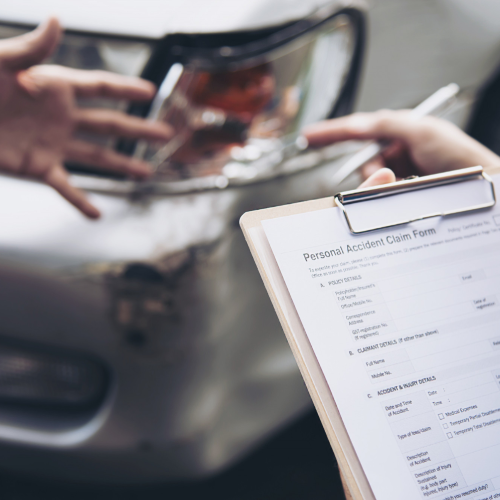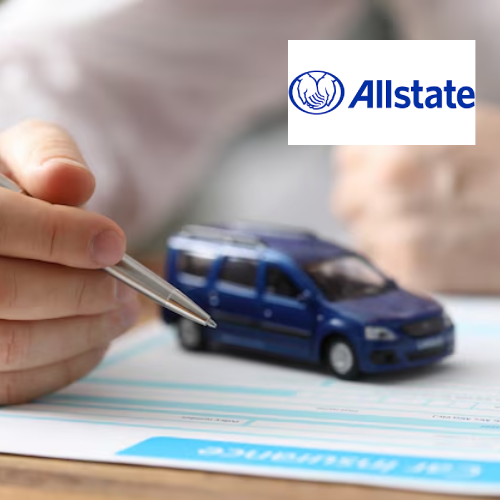Car accidents are stressful, even if they’re minor, and know how to claim your auto insurance certainly brings more security. From making sure everyone is safe to dealing with vehicle damage and paperwork, the aftermath can feel overwhelming.
But knowing what to do after an accident can help you stay calm, protect your rights, and make the insurance claim process much smoother. In this guide, we’ll walk you through the key steps to take after an accident and explain how to properly file an auto insurance claim:
Ensure Safety First
Your first priority after a car accident should always be safety. If possible, move your vehicle to a safe location, like the shoulder of the road or a nearby parking lot, to avoid further accidents. Turn on your hazard lights, and if you have emergency cones or flares, use them to warn other drivers.
Check yourself, your passengers, and the other party for injuries. If anyone is hurt, call 911 immediately. Even if there are no injuries, it’s a good idea to notify the police, especially if there’s significant damage or if you’re unsure about the legal requirements in your state.
Gather Information at the Scene
The next step is to collect as much information as possible. This will be crucial for your insurance claim and any legal procedures that may follow. Make sure to:
- Get the names, contact info, and driver’s license numbers of all drivers involved.
- Exchange insurance details, including policy numbers and insurance company names.
- Write down the make, model, license plate, and color of all vehicles.
- Talk to witnesses and get their contact information, if possible.
- Take photos and videos of the scene, showing vehicle positions, damage, traffic signs, and any road conditions that may have contributed to the accident.
The more evidence you gather, the easier it will be to prove your case and support your claim for auto insurance. Also, the way to contact your insurance company varies depending on the company, region, period and even the type of policy. Therefore, although there are some standard instructions, remember to check what your insurance company recommends.
Notify Your Insurance Company
Once the immediate situation is under control and everyone is safe, contact your auto insurance provider as soon as possible. Most insurers have 24/7 hotlines or mobile apps where you can start the claims process right away.
Be ready to share:
- The date, time, and location of the accident
- A description of what happened
- Contact and insurance information of the other party
- Photos or video evidence, if available
- A copy of the police report, once it’s available
Filing your claim for auto insurance quickly ensures that your company can start processing it without delay, and it also protects you if the other party tries to file first.
Understand What Your Policy Covers
Every auto insurance policy is different, so it’s important to understand what your specific plan includes. Typically, coverage types include:
- Liability Coverage: Pays for damage or injuries you cause to others.
- Collision Coverage: Covers damage to your car from a collision, regardless of fault.
- Comprehensive Coverage: Covers non-collision incidents like theft, fire, or weather damage.
- Uninsured/Underinsured Motorist Coverage: Protects you if the other driver has little or no insurance.
Your deductible (the amount you pay out of pocket) and policy limits will affect how much your insurer pays. Ask your provider for a clear explanation of what’s covered and how the process works.
Work with a Claims Adjuster
After you file your claim, your insurance company will assign a claims adjuster to your case. This person will review the evidence, assess the damage, and determine the amount your insurer will pay. The adjuster may request a repair estimate, inspect your vehicle in person, or send you to a partner repair shop.
Be honest and cooperative during this process, and respond promptly to any requests for documentation. If you’re unsure about anything, don’t hesitate to ask for clarification or speak with a representative from your insurance company.
Get Your Car Repaired
Once your claim is approved, your insurer may give you a list of preferred repair shops or allow you to choose your own. In many cases, repairs can begin quickly once estimates are confirmed. If your car isn’t drivable, your policy may include towing coverage or reimbursement for a rental vehicle while repairs are being made.
Keep receipts and records of all costs related to the accident. These may be needed later if you seek reimbursement or if there’s a dispute about coverage.
Final Thoughts: Be Prepared and Stay Calm
Accidents are unpredictable, but being prepared can make a big difference in how you handle the situation. Keep a copy of your insurance card in your glovebox, know how to contact your provider, and consider downloading your insurer’s app for easy access in an emergency.
Taking the right steps after an accident protects you legally, helps you get compensated fairly, and gives you peace of mind. While no one likes to think about car accidents, knowing how to claim your auto insurance is something every driver should learn — before it becomes necessary.
Disclaimer: This website/blog is for informational purposes only and does not constitute legal, financial, or insurance advice. For specific insurance-related guidance, please consult a licensed insurance professional.
All information in this and other BOISLA articles is subject to change over time. Please check for updates directly with the institutions and companies mentioned. Approval is subject to the institution’s review.
REFERENCES:
Read more about insurances in https://boisla.com/category/insurance/





